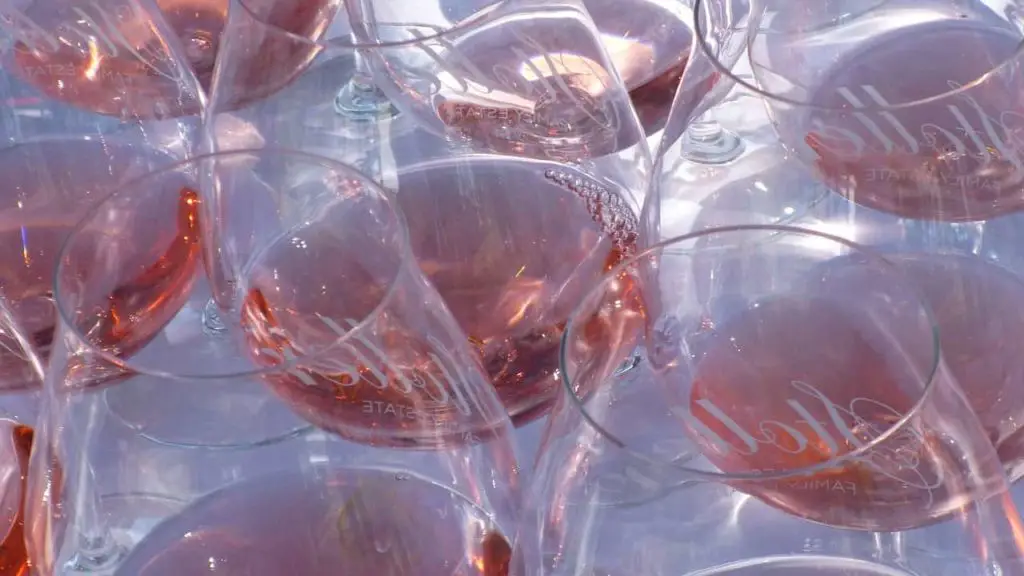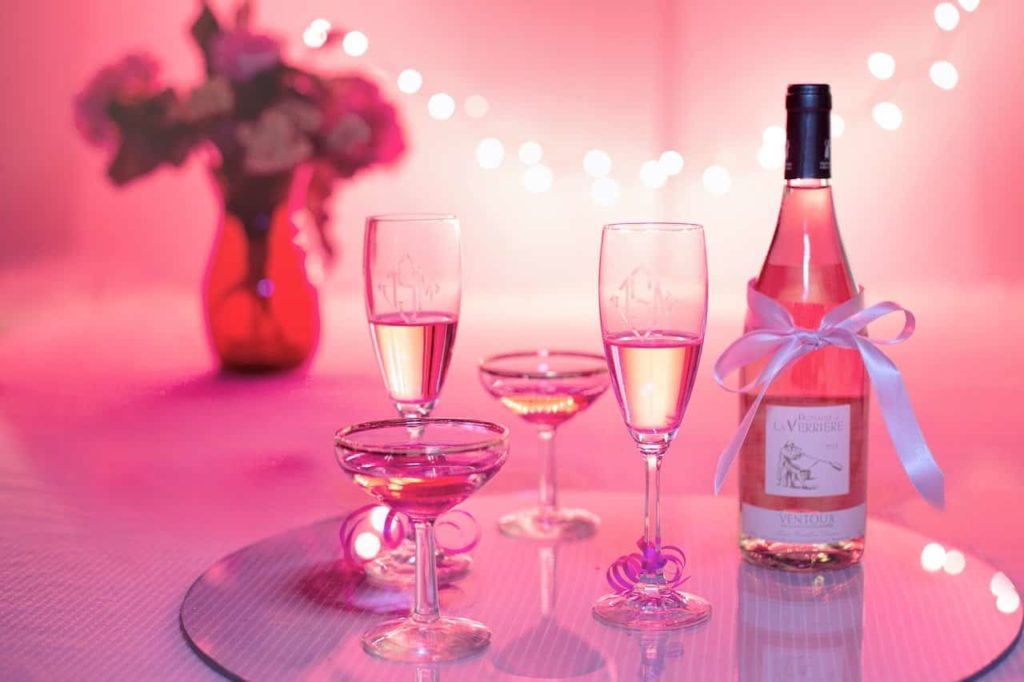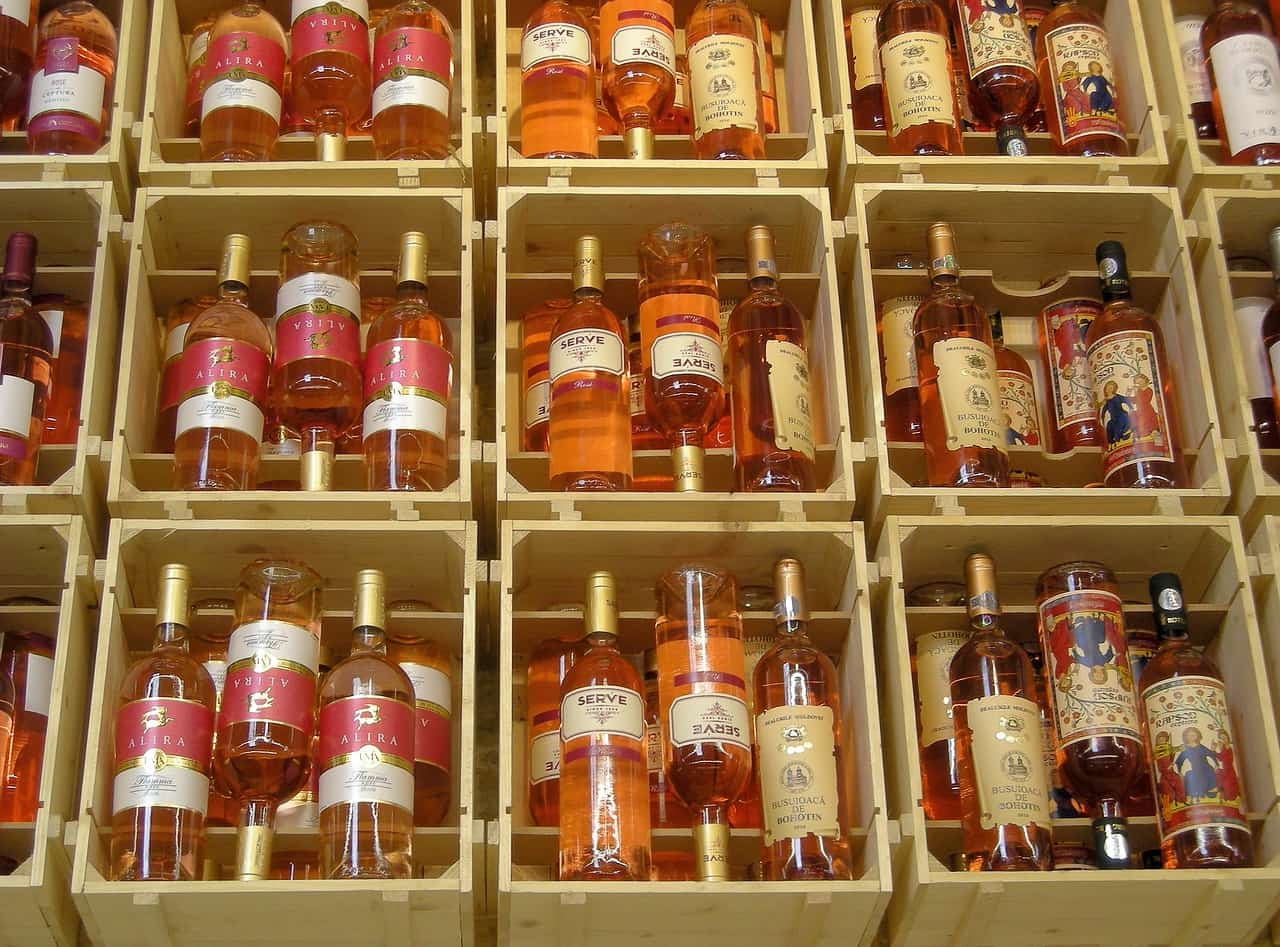In this article, we will be taking a look at a very popular wine called White Zinfandel. We will tell you about the history of this wine and recommend the best White Zinfandels out there.
White Zinfandels are the Best Wines
White Zinfandel is a popular wine even amongst wine connoisseurs. It is an off-dry to sweet wine that is often just called White Zin. Surprisingly it’s not actually white, but a rose colour. It is made from grapes that usually produce a spicy red wine. However, White Zinfandel has increased in popularity so much that around 85% of the total production of Zinfandel is allocated to White Zinfandel.
As well as appealing to wine enthusiasts, this wine is a good choice for the beginner. It isn’t too high in alcohol so if you are used to beer you won’t be given too high an alcohol kick. It is 9 – 10% ABV which is low for a wine. Most range between 12% and 14%. It is also low in calories, with 125 calories per 125 ml. It has a pleasant sweet taste and isn’t too dry which could put off people that are just beginning their wine journey.
History

The first vineyard in the world appeared in the Middle East and wine has been drunk for around 9,000 years. After being established in the Middle East, vineyards spread to the Mediterranean including France which has developed a thriving wine production business. Then, of course, vineyards spread throughout the world.
The Zinfandel grape originated in the US, in California. The El Pinal Winery in Lodi, California, first made it into a rose wine back in 1869. The current White Zinfandel is credited to Bob Trinchero of Trinchero Family Estates. He and his family took over the Sutter Home Estate which had been abandoned in 1947. They then started to produce Californian wines like the White Zinfandel.
In 1972, there was an attempt by a winemaker in California to make the Amador County Zinfandel, which is a red wine, more robust. However, the juice was bled off and seeing that it wasn’t the best way to make red wine, it was fermented as a white wine. However, because red grapes were used, the wine turned out to be a pale pink colour. It proved to be popular amongst wine enthusiasts and the general public. It was first called Ceil de Perdrix and was later changed to White Zinfandel.
Bob Trinchero decided to call White Zinfandel a ‘blush wine’, indicating that it had a pink colour. The term ‘blush wine’ was put on their bottles of White Zinfandel.
The birth of White Zinfandel saved old vines because it is so popular. There was no thought of destroying the vines to plant a newer grape. Yes, white wine grapes were producing excellent new wines, but White Zinfandel was just as popular and it still is.
Originally, winemakers were not sure where the grapes that produce Zinfandel were from, but now it has been proved that these grapes are genetically the same as Italy’s Primitivo and Croatia’s Crlienak Kastelanski. It is believed that a winemaker from Croatia brought over the cuttings.

In 1975, Sutter Home came across an obstacle in their wine production. The fermentation of the wine stuck because the yeast dried up before it had completely converted the sugar to alcohol. However, the wine it produced was surprisingly good. The wine itself still had sugar in it making it sweet, but the alcohol content was higher. It became popular and Sutter Home continued to produce this White Zinfandel.
Today, more winemakers are making White Zinfandel successfully and are exporting them in large quantities.
Tasting White Zinfandel
White Zinfandel should be drunk at a temperature of 12C which is a lot warmer than your fridge which will be around 4C. The best thing to do is to remove the Zinfandel wine from the fridge about half an hour before you are going to be drinking it. If the wine is too cold you won’t be able to taste the flavours which are an important part of the wine experience. White Zinfandel doesn’t improve with ageing so drink your bottle within two years of purchasing it. Don’t worry too much if you keep it for a bit longer. It won’t go off, but it won’t improve. What you see is what you get so enjoy the wine as soon as you remove the cork. It can’t be kept too long in the fridge after you open it because of oxidation so drink it within a few days.
We will now take a look at evaluating this wine. Both professionals and beginners may want to study this wine and give it marks for its quality. The American Wine Society has an evaluation form where you can rate the wine. It isn’t a bad idea to follow this point system as it will give you a good idea of which White Zinfandel you like best.
The point system works in this way –
- Appearance – 3 points
- Taste and texture – 6 points
- Aroma – 6 points
- Aftertaste – 3 points
- Overall impression – 2 points
An experienced wine taster will be able to put his or her preferences in wine aside and just fix their attention to the wine they are tasting. If you are new at this, try and be objective and just focus on your senses.
The maximum score is 20. If the score is below 12, the wine is certainly below par. Scores between 12 and 14 means that the wine is good, between 15 and 17, it is excellent, and the top score is 18 to 20. If you score high, the wine is definitely something you could easily serve at a dinner party as well as drinking with a family meal.

There are six steps you need to go through when tasting the wine. These are as follows:
- See
- Smell
- Sniff
- Sip
- Savour
- Spit (or not if you like the wine!)
You can use a white wine glass for tasting, but there are special rose glasses that you can buy.
You will find that older White Zinfandels taste like a fruit punch because of the sugar content. Now, White Zinfandels are a little more acidic and have a crisp taste.
How to Evaluate Wine
It isn’t too difficult to evaluate wine once you know what you are doing. We’re here to give you some tips.
- Make sure that you have good tasting conditions. You want to be in a peaceful room so you can concentrate on the wine, not on what people are talking about. You don’t want to have any smells in the room, like air fresheners, perfume, cooking, or cat litter trays. Other smells can interfere with the aromas of the wine.
- You need to have the correct temperature for the wine. White wines should be served at 11 -12C, rose wines at 10-12C, and red wines at 12 – 18C. If you have a cellar, keep your wine in there. If you are serving rose or white wine out of the fridge, take it out half an hour before so that it can come up to temperature. You can also warm up the wine by cupping the glass in your hands
- The next step is to pour the wine and examine it. Hold it up to the light and see if it is clear. A murky wine is not good. Look at the wine from all sides to see the range and depth of the colours.
- Now it’s time to swirl the wine around the glass to see how quickly it runs down the sides of the glass. It is better if it runs down slowly. This means that the wine has been made with ripe grapes, giving a richer texture.
- The next step is to sniff the wine. You will be looking for both very obvious flavours and background flavours. See if the wine smells of flowers, fruit, nuts, herbs, cinnamon, caramel, or toffee. Make sure that there isn’t a smell of vinegar or a musty smell. If there is, don’t bother tasting it as it will have gone off.
- Now is the time to sip the wine. Swill it around your mouth slowly and see what flavours you can taste. You will want to taste a wine that is balanced in its flavours while still being complex.
If you do a lot of wine-tasting, it is a good idea to keep a wine journal so that you remember what you thought of all the wines you taste.
Wine Zinfandel Options
We are now going to take a look at some of the best White Zinfandel wines out there. An online company called Wine Searcher ranks wines in their measure of popularity and list 160 different versions of White Zinfandel. Another company that we will take a look at is Vivino. They rate on a scale of one to five. Both of these online tools have millions of wine customers so they will give you an idea of the popularity of the wine.
Best White Zinfandel Wines

One of the best White Zinfandels is produced by Hiyu Farm’s Smockshop brand under the Spring Ephemeral name. This company has a biodynamic farm, restaurant, and vineyard. Why not combine a wine tasting with a meal at their restaurant? They are located at Hook River in Oregon. This White Zinfandel has a touch of acid and is not sweet. It is light-bodied and tastes and smells of red fruits, earth, smoke, and spice.
- Wine Searcher Ranking; 64,306
- Vivino Rating: 4.2
Another good White Zinfandel is Turley White Zinfandel from Napa Valley They make their White Zinfandel from early pickings and this creates a dry rose that is high in acid and low in alcohol. You will taste and smell brambly red fruits, savoury herbs, and spices. It is a refreshing wine and is a beautiful coral colour.
- Wine Searcher Ranking: 70,482
- Vivino Rating: 4.0
The next White Zinfandel we are going to look at is Bros Cellars White Zinfandel. This rose wine has evolved from the mixed red Zinfandel and Syrah which was first produced in 2006. In 2009, the first White Zinfandel was marketed by this company.
- Vivino Rating: 4.1

Coastal Wine Cellars White Zinfandel is an amazing pink colour reminding you of salmon. It is sweet, but there is a hint of acid. It goes well with spicy Indian dishes, mild cheeses, and seafood.
- Wine Searcher Rating: 62,458
- Vivino Rating: 3.5
Sutter Home White Zinfandel is fresh and is a pretty pink colour. It has a crisp finish but has delicate aromas of flowers, berries and melon.
- Wine Searcher Rating: 77,902
- Vivino Rating: 3.3
Wicked Lady White Zinfandel tastes of strawberries and is a rich salmon colour. A great drink to share with the girls as it is very feminine.
- Wine Searcher Rating: 35,054
- Vivino Rating: 3.8
Beringer Vineyards White Zinfandel is occasionally called Zinfandel Rose. This wine is sweet, but you will find a slightly acidic note. It is almost pink in colour. It tastes of berries, honeydew melons, and citrus, while the aromas remind you of fresh fruit and candy apple. This wine pairs with spicy food.
- Wine Searcher Rating: 3,740
- Vivino Rating: 3.5
White Zinfandel Pairings

White Zinfandel is a light-bodied wine and is served best on a hot summer’s day. However, it is also a good accompaniment at a dinner party. Salmon and other fish go well with White Zinfandel as does pork. It also goes well with creamy pasta as it isn’t heavy and cheeseboards that have light cheeses. A good port goes well with aged and blue cheeses. White Zinfandel is a good match for Asian foods such as curries, Mexican, and Creole dishes. It is also a good accompaniment to appetisers. The light and citrusy flavours are very versatile and go well with many dishes.
Frequently Asked Questions
How long is White Zinfandel good for?
This depends on whether the bottle is open or not. If the bottle hasn’t been opened, it will be best enjoyed within two years. If you have opened it, keep it in the fridge or a cool cellar and consume it within two weeks.
Why is it called White Zinfandel when it’s pink?
Yes, the wine is produced from a red-skinned grape, but it has the characteristics of white wine. The flavour is slightly sweet and has few tannins.
Is White Zinfandel Sweeter Than Pinot Grigio?
White wines usually fall into two categories, very dry or extra sweet. Pinot Grigio is bone dry while White Zinfandel is not as dry and usually has a touch of sweetness.
Conclusion
In the 1970s and 1980s, White Zinfandel was quite sweet and was very popular in the US as well as in the UK. In the US, as well as being drunk as it was, it was used in Sangria and wine spritzers. Now, however, some crisp and dry White Zinfandels are being produced. Even wine snobs are enjoying this new experience. White Zinfandel now accounts for 10% of the American market and Britain is not far behind. White Zinfandel is taking away a large portion of rose wines from Provence, a top distributor of rose wine.
.

